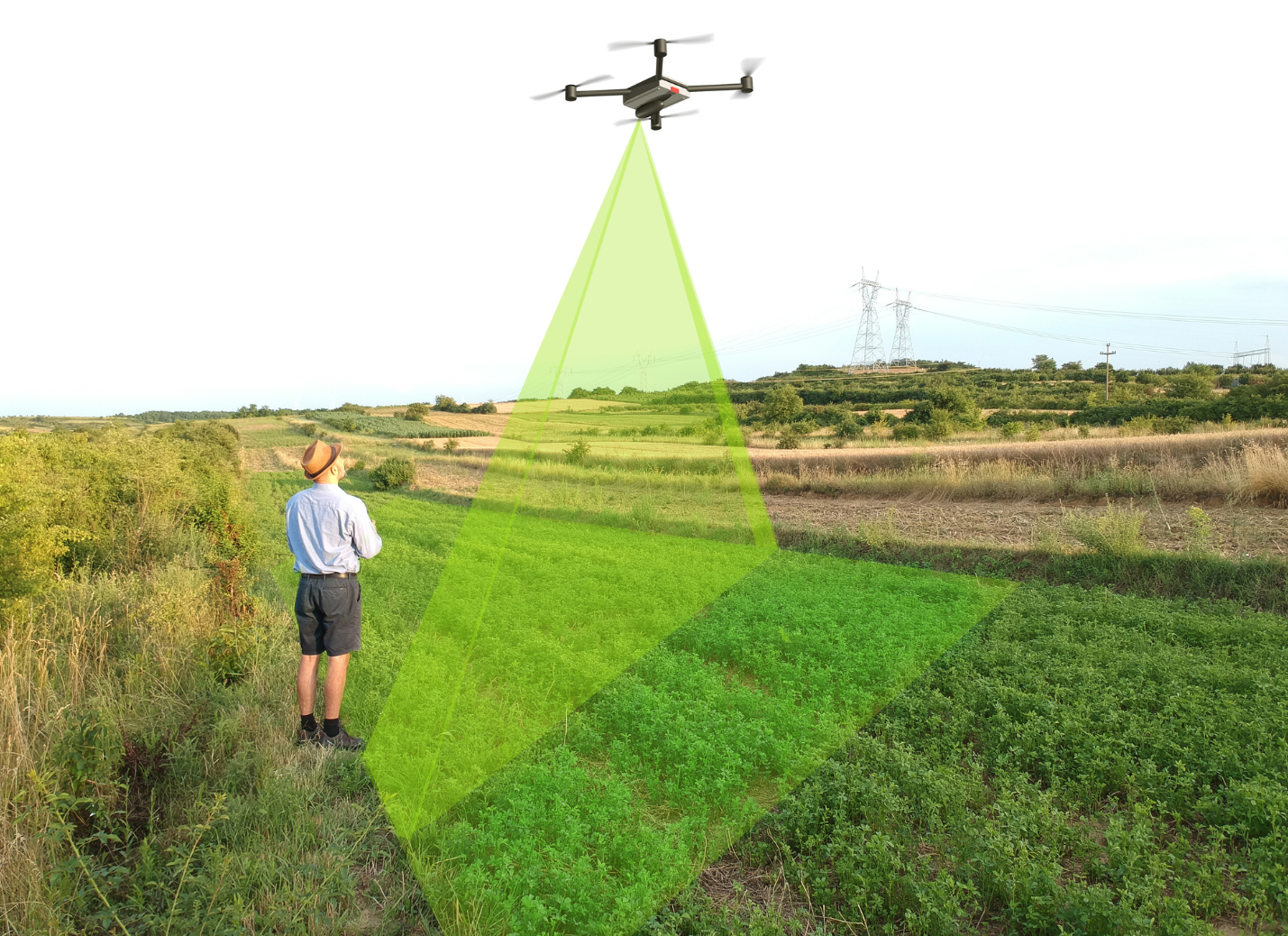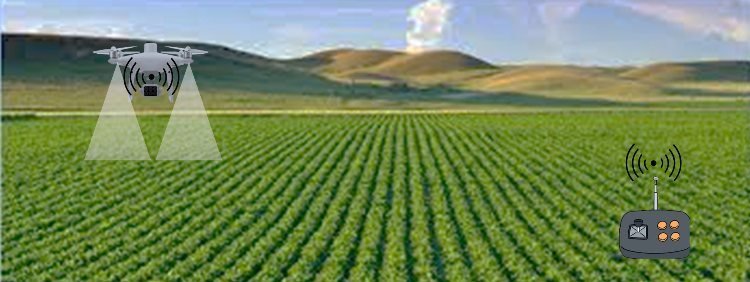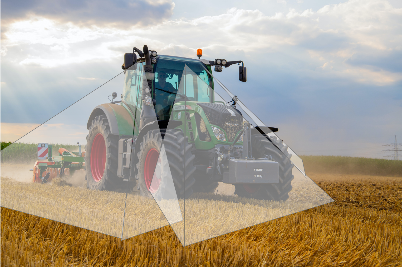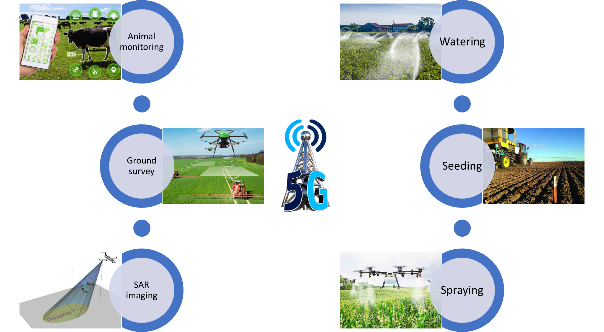Intelligent Engineering
Our Intelligent Engineering solutions across products, plant and networks, combine our engineering expertise with advanced technologies to enable digital engineering & operations, develop autonomous products & platforms, and build sustainable energy and infrastructure
.png?width=774&height=812&name=Master%20final%201%20(1).png)
Cloud Migration with Microservices: Benefits and Best Practices Maximize scalability, agility, and cost-effectiveness with microservices in cloud migration.
CyientCloud Migration with Microservices: Benefits and Best Practices Maximize scalability, agility, and cost-effectiveness with microservices in cloud migration.
Abstract
Cloud migration with microservices has emerged as a transformative approach for businesses seeking enhanced scalability, agility, and cost-effectiveness. This paper explores the immediate benefits and best practices associated with cloud migration using microservices. By understanding the advantages and implementing proven strategies, organizations can maximize the potential of their cloud migration projects and achieve optimal outcomes.
Introduction
Cloud migration involves moving applications, data, and infrastructure from on-premises systems to cloud environments. The microservices architecture, on the other hand, is a software development approach where applications are broken into small, independently deployable services. Combining cloud migration with microservices allows businesses to leverage the scalability, flexibility, and cost efficiencies provided by the cloud while embracing modern software development practices.

Access Whitepaper
Benefits of Cloud Migration with Microservices
Microservices with cloud migration can immediately enhance the competitive edge of an organization by allowing for:
Scalability
Microservices architecture allows for independent scaling of individual components, providing the flexibility to meet varying levels of workloads effectively.
Targeted troubleshooting
Microservices allow for isolating and debugging specific components or services, making troubleshooting more effective and efficient, ultimately reducing the time and effort required to identify and resolve issues.
Agility
Microservices enable faster development cycles and frequent updates without disrupting the entire application, promoting agility and the ability to adapt to changing market demands swiftly.
Cloud provider pricing models
Microservices architecture aligns well with cloud providers’ flexible pricing models, allowing organizations to optimize costs based on the specific needs and usage patterns of their microservices.
Innovation
The agility offered by microservices facilitates rapid experimentation and iteration on new ideas, fostering innovation and enabling organizations to stay competitive.
Resilience
Microservices deployment on cloud infrastructure enhances the resilience of the overall system as individual microservices can be distributed across multiple regions or availability zones. This reduces the impact of any infrastructure failures or outages.
Cost-effectiveness
Microservices architecture minimizes resource wastage by scaling specific services as required, leading to cost savings. Additionally, granular monitoring and efficient resource utilization help reduce operational costs.
Flexibility
Cloud migration with microservices provides the flexibility to choose the best-suited cloud provider for each microservice based on its specific requirement, performance needs, and service-level agreements.
Scalable development teams
Microservices enable more efficient and scalable development teams by allowing different teams to work on specific microservices independently. This promotes collaboration and speeds up the development process.
Continuous integration and deployment
Microservices architecture combined with cloud infrastructure facilitates continuous integration and deployment (CI/CD) practices, enabling faster and more reliable software releases.

Best Practices for Cloud Migration with Microservices
Adopting the best practices listed below can help organizations optimize their cloud migration journey and maximize the benefits of microservices architecture.
1. Thorough planning and assessment
Prioritize a comprehensive analysis of existing applications before migration. Identify components that can be successfully transitioned to microservices architecture. Consider factors such as scalability, performance, and compatibility.
2. Refactoring and optimization
During migration, refactor application components to ensure optimal performance and compatibility with microservices. Optimize code, dependencies, and configurations to take full advantage of the benefits of microservices architecture.
3. Containerization
Implement containerization using technologies like Docker and Kubernetes. Containerization enhances portability, scalability, and ease of deployment, allowing microservices to run consistently across different environments.
4. API-driven development
Design APIs with flexibility and independence in mind. APIs enable communication and seamless integration between microservices. Well-designed APIs provide loose coupling, allowing for individual service development and versioning.
5. Continuous Integration/ Continuous Deployment (CI/CD)
Establish robust CI/CD pipelines to ensure efficient and automated delivery of new functionalities. Continuous integration enables developers to continuously merge code changes, while continuous deployment automates the deployment process, maintaining stable application performance.
6. Monitoring and observability
Implement comprehensive monitoring solutions for microservices in the cloud. Real-time monitoring, logging, and analytics help identify and resolve performance issues, bottlenecks, and potential failures. Monitor response times, error rates, and resource utilization to proactively address any issues.
7. Automation and DevOps practices
Leverage automation and DevOps practices to streamline deployment, monitoring, and maintenance of microservices. Automation minimizes manual efforts and improves efficiency, enabling swift updates and reliable operations.
8. Security and resilience
Implement robust security measures to protect microservices and data in the cloud. Employ encryption, access controls, and secure communications protocols. Implement resilience strategies such as redundancy and fault tolerance to ensure high availability and minimize downtime.
9. Scalability and elasticity
Leverage cloud infrastructure to achieve scalability and elasticity. Utilize autoscaling capabilities to dynamically adjust resources based on demand. Design microservices to be stateless and horizontally scalable for optimal performance.
10. Testing and quality assurance
Establish a comprehensive testing strategy to ensure the quality and reliability of microservices. Conduct unit testing, integration testing, and performance testing to identify and address any issues at an early stage.
Following these best practices, ensures successful migration to the cloud with microservices, maximizing the benefits of scalability, flexibility, and agility while maintaining optimal application performance.

Conclusion
Cloud migration with microservices provides immediate benefits to businesses, including enhanced scalability, agility, and cost-effectiveness. By adopting best practices such as proper planning, application refactoring, API-driven development, and monitoring, organizations can optimize their migration journey and fully leverage the potential of microservices architecture. Successful case studies underscore the transformative power of this approach, encouraging businesses to embrace cloud migration with microservices as a strategic initiative for growth and innovation.
In this context, tools like the Cyient’s Microservices Modeler can greatly facilitate the implementation of microservices and REST APIs. The US Modeler is a Web-based tool that allows businesses to conceptualize, create, and manage microservices and RESTful APIs. It enables rich documentation and estimation for the development of RESTful APIs, enhancing the proposal response during presales. The US Modeler generates code for RESTful APIs in over 30 languages, conforming to cloud-native microservices architecture. Additionally, it provides ongoing API documentation and testing interfaces, improving developer productivity and standardization throughout the development cycle. By enabling a contract-first development approach, the US Modeler promotes agile development between different teams.
Overall, the combination of cloud migration with microservices and the use of tools like the Cyient US Modeler holds immense potential for businesses looking to drive innovation, optimize resource utilization, and meet the demands of a rapidly evolving market. Embracing these advancements can provide organizations with a competitive edge and pave the way for continuous growth in the digital era.

About the Author
Manavalan has 15+ years of expertise in cloud technology and has worked for Fortune 100 companies. He has extensive experience in aiding the deployment of cloud applications in enterprise infrastructures, and has worked in areas such as cloud computing, virtualization, database administration, automation, software development and DevOps. Manavalan has a successful track record of utilizing cloud services such as AWS, Azure, and Google Cloud to design, develop, and deploy applications with remarkable agility and ability. His technical expertise includes Infrastructure-as-a-Service (IaaS), containerization solutions (including DOCKER/Kubernetes), hybrid cloud infrastructures, DevOps, serverless orchestration of cloud services, and security and compliance standards (SOC2, PCI, HIPAA, GDPR).
Use Cases
4. RF Technology Use Cases in Modern Agriculture
Let us take a detailed look into the use of different RF technologies in modern agriculture.
SAR-based remote sensing for crop monitoring
SAR uses electromagnetic properties such as amplitude, phase, relative amplitude, and relative phase of radio waves reflected from the crops on which it is transmitting the signal. These EM properties can be mapped to a color map to identify the type, age, and health of the crops. The airplane carrying the SAR moves in a straight line at any point of time. Hence, consecutive time of transmission/reception of Figure 3. The SAR[1] principle of operation RF pulses translates into different footprints of the antenna beam on the ground. A coherent (synchronous) combination of the received signals allows the construction of a virtual antenna aperture that is much longer than the physical antenna length, giving rise to the term “synthetic aperture” and gives the radar the property of being an imaging radar. Figure 3 represents the SAR principle of operation.
![Figure 3. The SAR[1] principle of operation-1](https://www.cyient.com/hubfs/Figure%203.%20The%20SAR%5B1%5D%20principle%20of%20operation-1.png)
Figure 3. The SAR[1] principle of operation
Different types of crops respond to different RF spectrums. For example, tall and high biomass crops like sugarcane, maize, jute, and millets respond better to a lower microwave spectrum (1-2 GHz) whereas rice and pulses (low to medium biomass crops) are responsive to a slightly higher spectrum (4-8 GHz).
![Figure 4. SAR imagery for different crop types [2]](https://www.cyient.com/hubfs/Figure%204.%20SAR%20imagery%20for%20different%20crop%20types%20%5B2%5D.png)
Figure 4. SAR imagery for different crop types [2]
Further, crops at different ages reflect RF signals differently which gives an indication of crop ages (Figure 5).
![Figure 5. SAR imagery in different life stages of a crop [3]](https://www.cyient.com/hubfs/Figure%205.%20SAR%20imagery%20in%20different%20life%20stages%20of%20a%20crop%20%5B3%5D.png)
Figure 5. SAR imagery in different life stages of a crop[3]

GPR-based soil study
To complement SAR usage in modern agriculture, GPR, being in closer proximity to ground, is used to study soil contents in detail. GPR sends a radio frequency signal toward the ground and part of it penetrates the ground. When the signal experiences the differences in the media, part of the penetrated signal is reflected back toward the radar and carries the relative characteristics of the media (see Figure 4(a)) . Electromagnetic properties of the signal are then mapped to an image representation with respect to survey coordinates (see Figure 4(b)). Usually, GPRs are pulled over the ground to collect data. With advancement of drones, GPRs are now being mounted on drones to provide faster mapping of large farming lands.
%20Concept%20of%20GPR%201.png)
(a)
![(b) GPR being used for soil survey [4], 2](https://www.cyient.com/hubfs/(b)%20GPR%20being%20used%20for%20soil%20survey%20%5B4%5D%2c%202.jpg)
(b)
![Figure 6. (a) Concept of GPR (b) GPR being used for soil survey [4], (c) Drone-borne GPR [5](https://www.cyient.com/hubfs/Figure%206.%20(a)%20Concept%20of%20GPR%20(b)%20GPR%20being%20used%20for%20soil%20survey%20%5B4%5D%2c%20(c)%20Drone-borne%20GPR%20%5B5.png)
(c)
Figure 6. (a) Concept of GPR[4] (b) GPR being used for soil survey [4], (c) Drone-borne GPR [5]
Using the EM properties of reflected signals and corresponding mapping to images, different layers of soil and their spatial distribution can be estimated with centimeter accuracy. These characteristics may be due to the lithology of the soil or due to presence of moisture, pollutants, agrochemicals. An example is shown in the figure below.

Figure 7. GPR imagery of soil: (a) Initial condition, (b) With movement of agrochemical agents [6]
Microwave heating
Studies have indicated the effectiveness of microwaves in drying material with water content and this property is useful in drying crops faster as compared to the conventional convection method. The role of microwave heating in pest control dates back nearly 70 years where lethal exposure of insects to a 12 MHz electric field was demonstrated. Recent experiments show that insects infesting dry products are quickly affected by microwave energy as the water content in their body gets heated. An application of microwave with controlled transmitting power helps in germination of seeds. Studies have shown that the use of microwaves during drying can be safe in seeds of soybeans, corn, and beans, among others. Many studies recognize that drying using microwaves has great potential as it reduces the drying time considerably. Other applications of microwave heating include microwave-assisted bio-fuel extraction and microwave-assisted pyrolysis (to convert biomass to an intermediate liquid product that can be refined to drop in hydrocarbon biofuels, oxygenated fuel additives, and petrochemical replacements).
RF communications in agriculture
Majority of the RF sensors described above are mounted either on airborne platforms or on a ground vehicle. Drones are the latest, most popular, and inexpensive airborne platform as compared to others. Drones are required to be controlled remotely using wireless technologies. A robust and long- distance RF communications system needs to be established for controlling and operating the drones as desired.

Figure 8. Remote-controlled drone for agriculture
With the advancement of technology, agricultural vehicles are adopting autonomy in their operations. The key elements of success for this are RF communications equipment and network infrastructure for a connected vehicle.

Figure 9. Agriculture vehicle with autonomy
5G technology in agriculture
The advent of 5G technology will revolutionize global farming landscapes and will open up multiple ways to establish and grow precision farming. The figure below shows that every element in modern agriculture once connected to a high speed and high throughput 5G cellular network, works in tandem with the other to optimize resources and maximize yield. The imagery generated from SAR and GPR demand throughput for transferring them to a distant and central location/data cloud. Similarly, to control farming equipment remotely, a low latency communications network in inevitable.

Figure 10. Uses of 5G technology in agriculture
Future of Hyperautomation
Hyperautomation will continue to evolve and redefine industries. Here are a few trends that could shape its future:
Hyperautomation as-a-service
Cloud-based hyperautomation platforms will become more accessible, allowing organizations of all sizes to leverage automation as a service. This democratization of technology will drive innovation across sectors.
Human-automation collaboration
Rather than replacing humans entirely, hyperautomation will focus on enhancing human capabilities.
Industry-specific solutions
Hyperautomation will be tailored to meet the specific needs of different industries. We can expect specialized solutions in sectors like healthcare, manufacturing, telecom, energy, and utilities addressing industry- specific challenges and requirements.
Enhanced cognitive capabilities
Advances in AI, ML, and Gen AI will lead to even more sophisticated cognitive capabilities, enabling systems to handle complex decision-making and problem- solving tasks.
IoT integration
IoT will become more tightly integrated with hyperautomation. Sensors and data from connected devices will be used to optimize and automate processes in real time.
Cross-industry collaboration
Industries will increasingly collaborate and share best practices for hyperautomation implementation. This cross-pollination of ideas will accelerate innovation and adoption.
Regulatory frameworks
Governments and regulatory bodies will establish frameworks to address the ethical and legal implications of hyperautomation, ensuring a responsible and fair use of the technology.
In the future, we can expect to see even more changes in the way hyperautomation is used and implemented. Advances in IoT, blockchain, and quantum computing will open opportunities for hyperautomation to be applied in new domains and enable it to automate highly complex tasks and processes.
5. Cyient’s Approach
As a technology enabler and solutions provider, Cyient works closely with industry experts to understand their concerns and challenges. With the vision of Designing Tomorrow Together, we enable our customers to apply technology imaginatively across their value chain to solve problems that matter. We aim to provide sustainable solutions and facilitate the adoption of disruptive technologies to conserve valuable resources. Cyient has decades of experience in helping customers worldwide to research, deploy, integrate, migrate, and support different embedded applications, communications networks, and RF technologies.
Sustainability is one of our key focus areas. The aim is to bring out solutions to optimize the use of resources and cater to the growing needs of the society. Technologies such as connectivity, IoT, and smart technologies play an important role in sustainability by reducing carbon footprints. Precision agriculture is one of the areas where embedded technologies such radio frequency technologies have immense potential to bring out solutions for a more sustainable future.

About Cyient
Cyient (Estd: 1991, NSE: CYIENT) partners with over 300 customers, including 40% of the top 100 global innovators of 2023, to deliver intelligent engineering and technology solutions for creating a digital, autonomous, and sustainable future. As a company, Cyient is committed to designing a culturally inclusive, socially responsible, and environmentally sustainable Tomorrow Together with our stakeholders.
For more information, please visit www.cyient.com